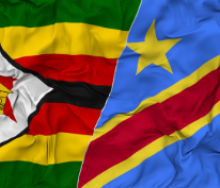The queue of northbound long-distance trucks facing their last border obstacle heading towards the Democratic Republic of the Congo (DRC) this morning had a tailback of more than 70 kilometres south of the weeks-long congested crossing of Kasumbalesa.
One driver, the Transit Assistance Bureau (Transist) was told, had been waiting at the border between the DRC and Zambia for a week.
Footage shared by Transist shows trucks jammed into a parking area, waiting to get through the tangled transit, with related reports speaking of tempers rising between deeply frustrated drivers as they jockey for position in what has become one of the worst chokepoints in African road freight.
To make matters worse, the bureau run by the Federation of East and Southern African Road Transport Associations (Fesarta) has also heard from a driver who said he had been assaulted by Zambian police at one of the checkpoints due south of the border.
Information on the situation coming through this morning is regrettable considering Friday’s confirmation from the Zambian Revenue Authority (ZRA) that Zambia and the DRC had made a bilateral undertaking to open the border on a 24-hour seven-days-a-week basis.
This decision was taken after a Joint Permanent Commission session had been held in Lusaka, a source said, adding that “each country is now required to make legislative provisions to support this adjustment”.
Cross-border transporters, especially Hazchem hauliers and industrial cargo carriers serving the DRC’s copper-mining province of Haut Katanga, however have reason to view such resolutions with reservation.
In mid-April, by which time Kasumbalesa was already an inhumane shambles, with drivers forced to camp out in their trucks, a ministerial visit resulted in threats of strong action if the border remained blocked up.
Zambian Transport and Logistics minister Frank Tayali said heads would roll if the congestion wasn’t cleared up.
ZRA northern revenue district commissioner Levy Simatimba said extended operating hours was the only solution for a border too busy to be run like a daytime business.
That was more than four weeks ago.
A bulk liquid haulier approached for comment this morning said it was becoming a hopeless situation, with officials on either side of the border still blaming one another.
However, whereas DRC border officials are often blamed for backlog-inducing practices, there is one common thread that unites transporters in their frustration – the need for customs personnel south of the border to step up!
“Our guys at Kasumbalesa are identifying ZRA as the main culprit,” the haulier said.
“They are not working a full day.”
He said they were also inspecting exports, “something they are not supposed to be doing and are denying but doing anyway”.
He added that a single gate into the DRC and a “general lack of performance” compounded the problems at the crossing, with authorities on either side unwilling to accept responsibility.
Talk of opening the Mokambo and Sakania transits to the east of Kasumbalesa for entry cargo into the DRC is also not taken seriously by industry, as it is felt that the governments in Kinshasa and Lusaka lack the wherewithal to launch such trade-facilitative interventions
Such is the situation at Kasumbalesa that loads going into Haut Katanga were now only accepted as a last resort, the transporter said.
“At the end of the day it’s a mess. I think the only solution is to create a bonded dry port facility in Chingola, the Zambian town about 44 kilometres south of Kasumbalesa.
“Goods can then be offloaded there for DRC trucks to come and fetch,” the transporter said.
“It will be a massive undertaking though, especially for operators carrying many different liquids and abnormals. Maybe it’s only those trucks that should be allowed into the DRC, while general cargo is offloaded.”













